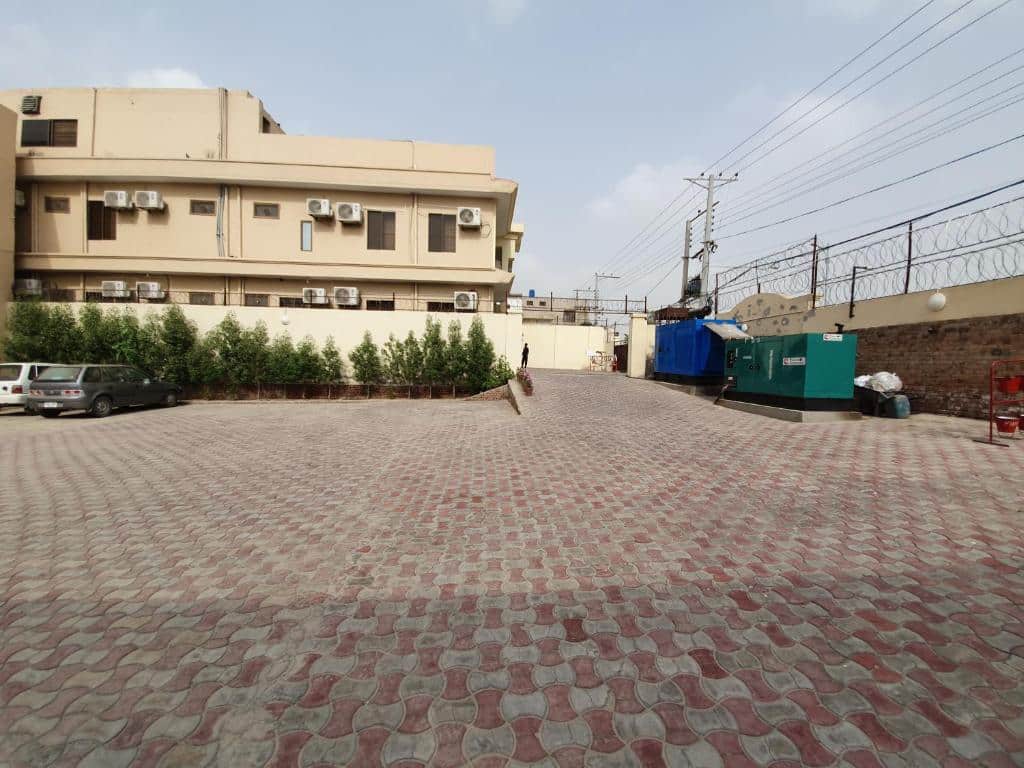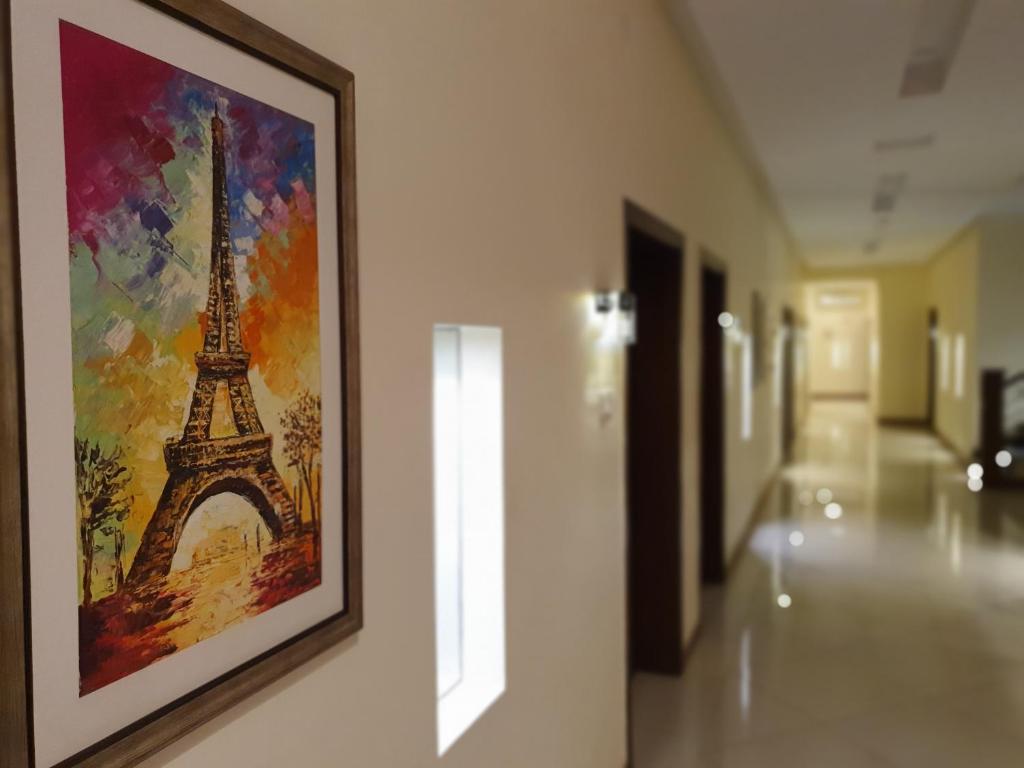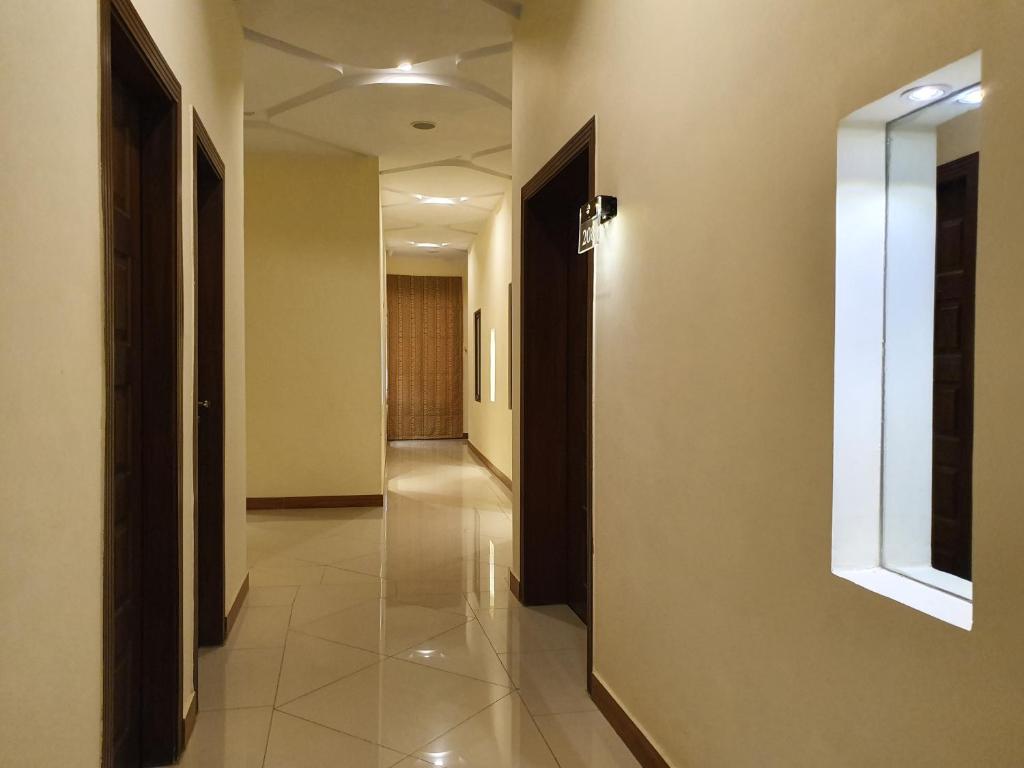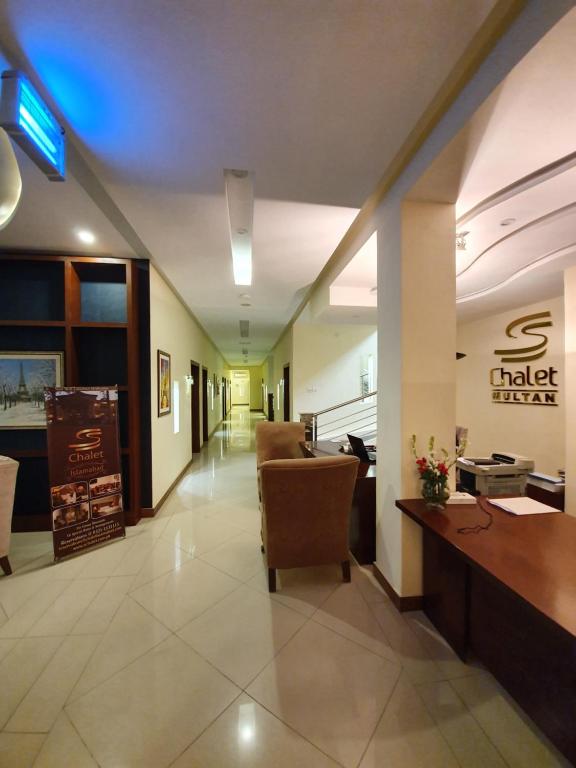Hotel Surroundings
| Famous Landmarks | Distance from Landmarks |
|---|---|
| Distance from Multan Airport | 2.1 km |
| Tomb Shah Rukne Alam | 4.5 km |
| Shrine Of Bahauddin Zakriya | 6.1 km |
| Tomb Of Shah Yusuf Gardezi | 4.7 km |
General
The Chalet hotel is located in Multan. The hotel offers complimentary private parking and car rental for visitors who wish to explore the local area. The hotel has air-conditioned rooms equipped with a desk, a kettle, a refrigerator, a minibar, a safety deposit box, a flat-screen television, and a private bathroom with a shower. The hotel provides a continental or a la carte breakfast to their guests each morning. The S Chalet Multan features a sun terrace. The airport closest to S Chalet Multan is Multan International Airport, located 1.4 kilometers away.
Check-in
From 1:00 pm
Check-out
Untill 12:00 pm
Cancellation / Prepayment
Cancellation and prepayment policies vary according to room type. Please check the room conditions when selecting your room.
Payment Options
Bank Transfers & Online Payment options available in the following bank account.
- Account Title: Fly Pakistan
Facilities
Outdoors
- Garden
- Terrace
Services & Extras
- Tickets to attractions or shows
Pets
- Pets are not allowed.
Activities
- Children's playground
- Evening entertainment
- Happy hour
- Kids' club
- Live music/performance
- Table tennis
- Tennis equipment
- Themed dinner nights
Food & Drink
- Bar
- Bottle of water
- Breakfast in the room
- Chocolate or cookies
- Coffee house on site
- Fruits
- Kid meals
- Kid-friendly buffet
- Restaurant
- Snack bar
- Special diet menus (on request)
- Wine/champagne
Internet
- WiFi is available in all areas and is free of charge.
Reception services
- 24-hour front desk
- ATM/cash machine on site
- Concierge service
- Currency exchange
- Express check-in/check-out
- Lockers
- Luggage storage
- Private check-in/check-out
- Ticket service
- Tour desk
Cleaning services
- Daily housekeeping
- Dry cleaning
- Ironing service
- Laundry
- Shoeshine
- Trouser press
Business facilities
- Business centre
- Fax/photocopying
- Meeting/banquet facilities
General
- 24-hour security
- CCTV in common areas
- CCTV outside property
- Fire extinguishers
- Safety deposit box
- Security alarm
- Smoke alarms
Safety & security
- Air conditioning
- Barber/beauty shop
- Bridal suite
- Car hire
- Designated smoking area
- Facilities for disabled guests
- Family rooms
- Gift shop
- Grocery deliveries
- Lift
- Minimarket on site
- Newspapers
- Non-smoking rooms
- Room service
- Shops on site
- VIP room facilities
Languages spoken
- English
- Hindi
This Chalet Multan's Map Location is not Available yet,
For more details Please contact FlyPakistan 24/7 Customer Care Service +92 345 9668442.
Hotel Surroundings
| Famous Landmarks | Distance fro Landmarks |
|---|---|
| Tomb Shah Rukne Alam | 4.5 km |
| Shrine Of Bahauddin Zakriya | 6.1 km |
| Tomb Of Shah Yusuf Gardezi | 4.7 km |
Map View of Chalet Multan
Hotel Score and Score Breakdown
Based on 782 reviews
Guest reviews are written by our customers after their stay at Hotel Chalet Multan
- Clean
- 8
- Comfort
- 6
- Location
- 8
- Staff
- 10
- Services
- 7
- Value for money
- 9
Guest reviews
Tomb Of Shah Yusuf Gardezi
Alang Bohar Gate, Inner City, Multan • Show on map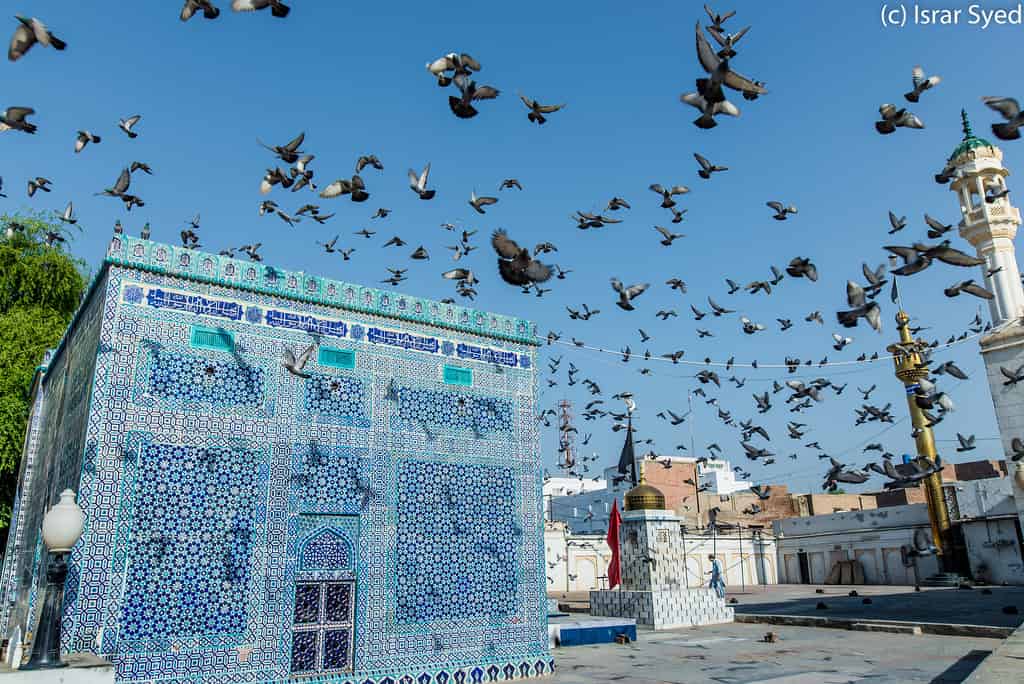
Shah Yousuf Gardez was a revered Sufi saint who arrived in Multan, Pakistan, in 1088 AD.
Known for his miraculous deeds, he played a significant role in spreading Islam in the region and revitalizing the city of Multan. Originating from Gardez in present-day Afghanistan, Shah Yousuf Gardez's contributions are remembered as pivotal in the spiritual and cultural history of the city.
Tomb Shah Shams Sabzwari Tabrez
Baba Safra Rd, Basti Bawa Safra, Multan • Show on map
Shamsuddin Sabzwari, a 13th-century Sufi saint, arrived in Multan and left an enduring legacy through his teachings and poetry.
Known for his spiritual influence, he established a dargah that continues to draw devotees. Shamsuddin Sabzwari's mausoleum in Multan is a site of annual pilgrimage, with the Urs held every June, celebrating his contributions to the spread of Islam in South Asia.
Tomb Shah Rukne Alam
Qilla Kohna, Qila Kohna Qasim Bagh Rd, Multan • Show on map
Shah Rukn-e-Alam born in Multan on November 26, 1251, Shah Rukn-e-Alam was a prominent Sufi mystic and the grandson of Sheikh Baha-ud-din Zakariya.
His spiritual teachings left a lasting impact on the region. He was originally interred in his grandfather's mausoleum but was later moved to his own iconic tomb, which remains a significant landmark in Multan. His legacy is preserved through his spiritual successor and the mausoleum's enduring significance.
Fort Kohna Qasim Garden
Hussain Agahi Rd, Qila Kuhna Qasim Bagh, Multan • Show on map
Multan, a historic city in Pakistan, is renowned for its rich heritage and is often referred to as the "City of Saints."
Known for its extreme weather, dust storms, beggars, and graveyards, Multan houses the iconic Multan Fort, once the stronghold of the Katoch Dynasty. Though much of the fort was destroyed during British rule, it offers panoramic views of the city and remains a testament to Multan's storied past.
Shrine Of Bahauddin Zakriya
Prahladpuri Temple، Qilla Kohna Qasim Bagh Rd, Multan • Show on map
The shrine of Bahauddin Zakariya, constructed in 1262, reflects the spiritual significance of Sufi saints in the Muslim world.
Financed by the saint himself, the shrine is a testament to his independence and devotion. It survived attacks during the British siege of Multan in 1848 and continues to attract pilgrims, symbolizing resilience and faith.


